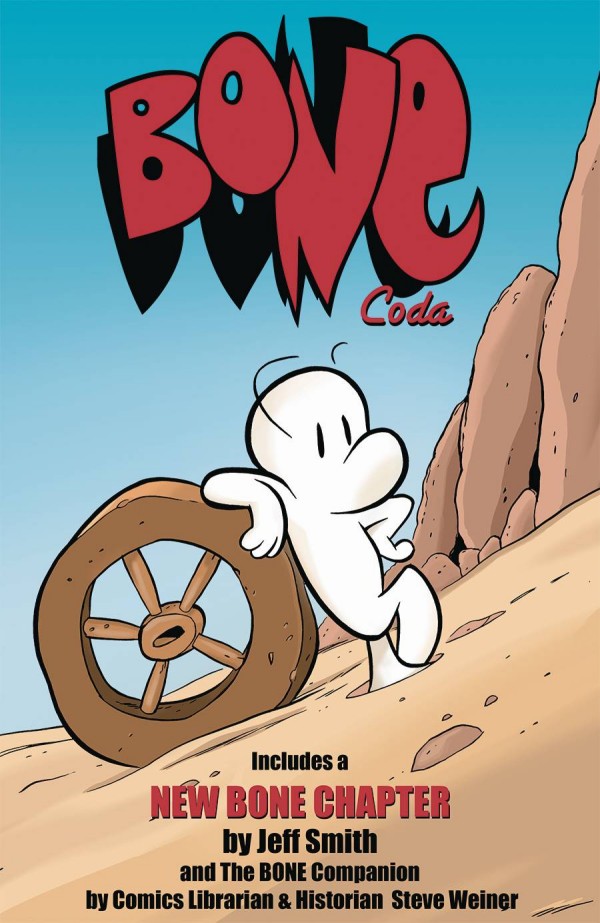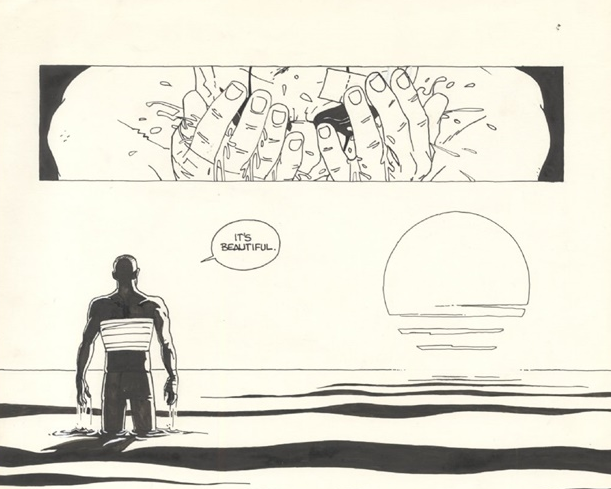 Written by Eiji Otsuka
Written by Eiji OtsukaIllustrated by Housui Yamazaki
Dark Horse
After reading a fair amount of light shojo and shonen, it's always nice to return to one of my favorite kinds of manga, horror, served up on a seinen plate by Otsuka and Yamazaki.
Our cast of characters returns to the shorter episodic format of the first volume this time. First up, Karatsu learns his powers are stronger than he thought as the team must help a dead body part of a living man find their way home. Along the way, they run into illegal organ harvesting, a crusty welfare office worker, and even the second Iraq War!
Next up, Oni Press gets its revenge on a rival publisher when...um, sorry, that's not quite right. Oni's symbol, however, features in a complex murder scheme that the team must foil--without letting the police get wise to their involvement. Finally, returning to the theme of missing body parts, an ear leads the Delivery Service to a trail of suicides along a particular track. Can they figure out why before the killer sound takes them along for the ride?
I was particularly impressed with the plotting of these stories. Each one was perfectly logical based on what was going on in the story, yet Otsuka manages to keep the reader surprised. The first story is spoiled a bit by Dark Horse's back cover blurb, but the idea of being able to use dead organs to find a live person was brilliant. Plus, it allows further stories to blossom, such as the tale of the suicidal ear that closes out this trade. It's one thing to create an intricate plot--but to use that plot to drive other stories? Now that's impressive.
Otsuka uses a lot of little clues to lead up to the big picture, just like he did in the longer story of volume two. Delivering newspapers might seem like a way to keep the team in ramen noodles, but it also helps the team solve the crime. The tools needed are always shown to the reader, but they aren't always apparent at first glance. I really like that as a narrative trick and Otsuka is one of the best I've ever seen at doing it in a comic.
There is a depth to Otsuka's writing that comes out on the page. Our heroes aren't just thrown into a situation, hoping for the best. They must do research and put the clues together, even if it doesn't mean a profit. So Sasaki will dig up research on the location of suicides or homeless Iraqis that have been deported while Karatsu and Numata do legwork at an abandoned chop shop or even a military base. It's like reading a detective story mashed up with a horror novel, and the results work very well.
Much as I enjoyed the long story in the last volume, it was nice to see the team work on several adventures this time. Otsuka is adept at writing both short and longer stories, as this volume clearly shows. He's also taking some time to expand the universe a bit, giving them a new recurring character in the social worker who looks like Yakuza. He also does a better job of involving the whole team this time, as Makino gets some screen time as part of the link to the war that drives the first story.
My only complain, and it's minor is that it's mostly the Karatsu and Numata show again, with Sasaki being the woman who looks at the big picture, sometimes at her own peril. I'd like to see Otsuka round things out a bit better than he's doing currently and also stop using Sasaki as a victim. She's strong enough to handle herself, but we've not seen it yet. (I'm wondering if this is a seinen trope, and I've just not read enough to know yet.) I'm sure it's hard to give everyone enough screen time, but I think we need to have a reason for the others to be around, which is not fully developed at this time. Since this in an ongoing series, however, I'm sure there's plenty of time to do that.
I have to admit, I was a bit disappointed by Yamazaki's art this time around. He's normally a very crisp artist, with fine detailing that helps give the series its realistic feel. This time the art looked rushed in places, particularly in medium shots. There was a sketchiness to some of the drawings that make me feel like he was rushing a bit at times to get the story completed. This seemed to happen the most with Susaki, who also ends up being dressed in a lot more revealing clothing than in the past. I hope this was just a few bad panels to meet the dreaded deadline doom, as Marvel used to say.
Overall, however, his art is still very good. Yamazuki has a great ability to make the horrific look perfectly normal in context, both in this series and in Mail. The walking organ donor is a thing of nightmare, but is drawn with pinpoint accuracy. The horrors of the war dead are captured as though a photo, reminding us that battles are never clean. Even a man with an axe in his head is shown as it would look like in real life, without any embellishment to add to the gore. I sometimes wonder how Yamazaki manages this, but perhaps I don't want to know!
Kurosagi continues to be a solid manga that keeps to its premise without getting stale by adding new wrinkles into the team's adventures. I like the idea that sometimes they are a crime prevention unit, not just a crime avenging group. I look forward to reading more creepy adventures with the team as the volumes progress.







